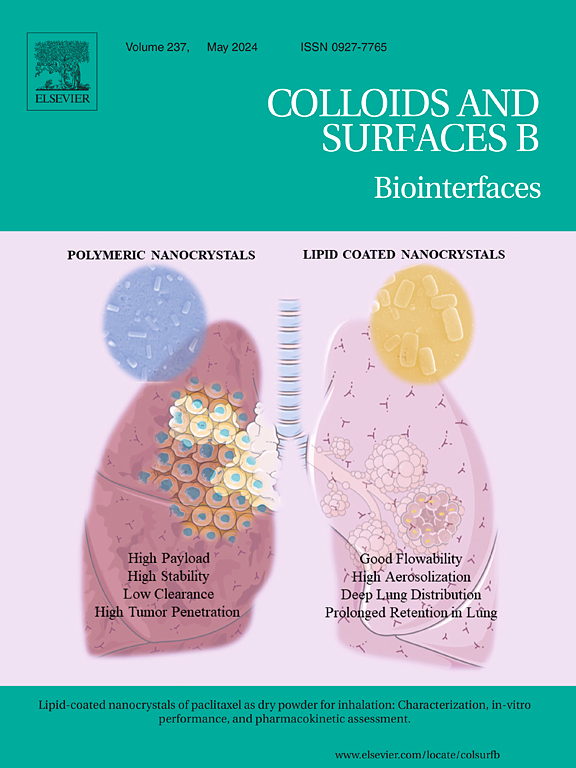Tannic acid coating modification of polypropylene providing pH-responsive antibacterial and anti-inflammatory properties applicable to ostomy patches
IF 5.4
2区 医学
Q1 BIOPHYSICS
引用次数: 0
Abstract
We report highly efficient, antioxidant, anti-inflammatory, pH-responsive antibacterial coatings developed via direct assembly of a nature compound tannic acid (TA) with the cationic antibiotic quaternized polyethyleneimine (QPEI). The surface of polypropylene was modified with these coatings. Under acidic conditions, the coatings significantly enhanced the antibacterial performance against Staphylococcus aureus and Escherichia coli, and the antibacterial rate reached more than 90 %. The free radical scavenging rate could exceed 91 %. Thus, the excess reactive oxygen species (ROS) could be cleared, and the oxidative stress production could be significantly reduced. In vitro anti-inflammatory experiments revealed that the coatings significantly reduced the expression of TNF-α and IL-6 and promoted the release of IL-10. These results indicated the excellent anti-inflammatory effects of the coatings. In vivo experiments revealed that the coatings could rapidly achieve bactericidal effects and subsequently prevent inflammatory reactions, thereby inhibiting the generation of fibrosis. Through molecular docking simulation experiments, the mechanism of LBL self-assembly between QPEI and TA components has been clarified for the first time. By designing the surface coating of a material and combining it with bioactive components, multiple functions could be achieved to meet the clinical needs of stoma patches and promote the development of medical materials.
求助全文
约1分钟内获得全文
求助全文
来源期刊

Colloids and Surfaces B: Biointerfaces
生物-材料科学:生物材料
CiteScore
11.10
自引率
3.40%
发文量
730
审稿时长
42 days
期刊介绍:
Colloids and Surfaces B: Biointerfaces is an international journal devoted to fundamental and applied research on colloid and interfacial phenomena in relation to systems of biological origin, having particular relevance to the medical, pharmaceutical, biotechnological, food and cosmetic fields.
Submissions that: (1) deal solely with biological phenomena and do not describe the physico-chemical or colloid-chemical background and/or mechanism of the phenomena, and (2) deal solely with colloid/interfacial phenomena and do not have appropriate biological content or relevance, are outside the scope of the journal and will not be considered for publication.
The journal publishes regular research papers, reviews, short communications and invited perspective articles, called BioInterface Perspectives. The BioInterface Perspective provide researchers the opportunity to review their own work, as well as provide insight into the work of others that inspired and influenced the author. Regular articles should have a maximum total length of 6,000 words. In addition, a (combined) maximum of 8 normal-sized figures and/or tables is allowed (so for instance 3 tables and 5 figures). For multiple-panel figures each set of two panels equates to one figure. Short communications should not exceed half of the above. It is required to give on the article cover page a short statistical summary of the article listing the total number of words and tables/figures.
 求助内容:
求助内容: 应助结果提醒方式:
应助结果提醒方式:


